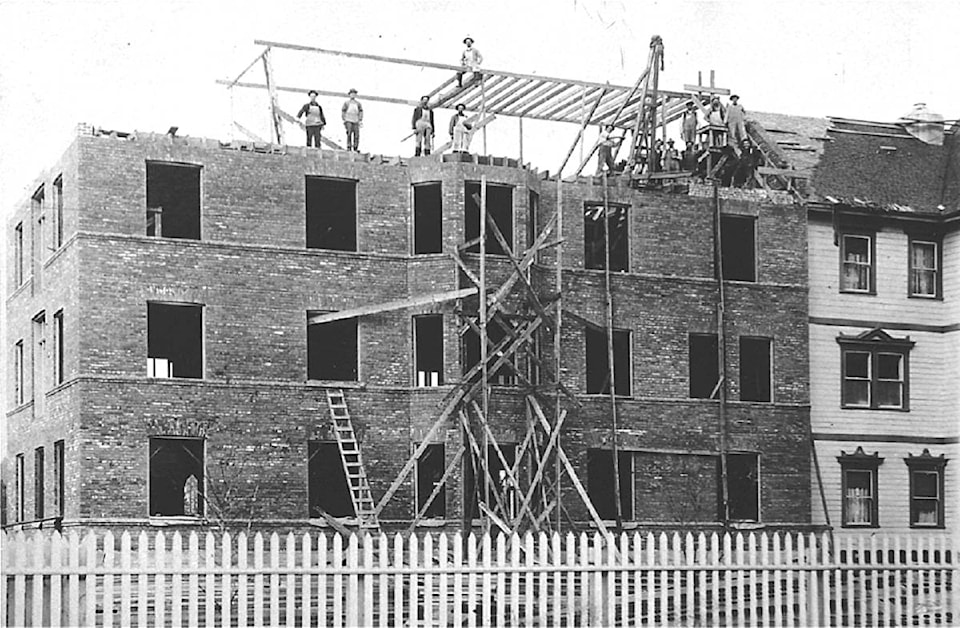The City of Cranbrook’s order to complete the demolition of structures, such as they are, and clean-up of the former Tudor House is the final chapter in the long life and long death of one of Cranbrook’s great heritage buildings.
If you choose to believe that a building has a soul, metaphorically speaking, or has acquired one through long life and experience, then the Tudor House — previously the St. Eugene Hospital — and now basically a dumping ground, has suffered a fate as sorrowful as any could befall a human being.
At their meeting of Monday, May 31, Cranbrook City Council approved a remedial action order for the property at 22 Briar Avenue NW. Razed by fire in 2002, the property has over the years become unsightly and unsafe, a dumping ground for garbage, with dilapidated trailers and vehicles used as ad hoc living quarters, with extension cords to get power, garden hoses for water, rough structures for latrines, and overall “the property is littered with discarded material, furniture and rubbish and the extreme overgrowth of vegetation adds to the unsightliness of the property.”
And this has been going on for years. Five years after the fire, the City declared the structure a nuisance and ordered remedial action. Now, 19 years after the fire, the City is ordering remedial action again — demolition and clean-up of the site.
The owners will have an opportunity to rebuilt or remediate the abandoned foundation, although the City will not support a repurposing if studies show the foundation is not salvageable, which is most likely, if you ask me.
Buildings are not permanent, and have life spans — some for thousands of years. And most communities have replaced old buildings with new. The history of Cranbrook’s architectural heritage can be rather fraught. There is a recent movement of rejuvenation, with various downtown heritage buildings being renovated and repurposed, but by and large our former architectural gem of a city is now vanished, through demolition, fire, attrition, progress, and other reasons. Such is life.
I always thought the “Tudor House” was the most orphaned and unfortunate Cranbrook’s historic buildings.
The St. Eugene Hospital was rebuilt in Cranbrook in 1901 — 120 years ago, think of that. It was a nursing hospital run by the Catholic Sisters of Providence, with the last class of nurses graduated in 1949, and the hospital itself closed in 1965. Shortly afterwards, it was converted to the Tudor House.
Bar on the main floor, rooms above. I will say that I spent many, many hours at the Tudor House when I moved to Cranbrook. It was a pretty ramshackle, but it had spirit and could be a fun place to be, especially around the turn of the century.
Then it burned down on the afternoon of August 12, 2002. It seemed like the whole town came down to stand around and watch. I did. While it was being gutted by fire, you could hear the old building scream. Then, for the next 19 years, we couldn’t even keep her grave clean.
Maybe someday, a new building or development will rise up on what’s really a prominent and historic corner of town, something to greet travellers or residents, where one of Cranbrook’s great but ultimately unloved heritage structures used to stand, on the other side of the tracks.
